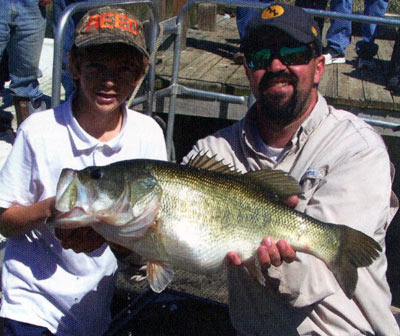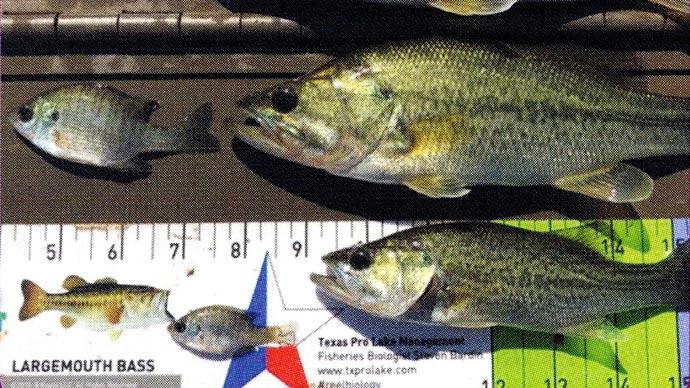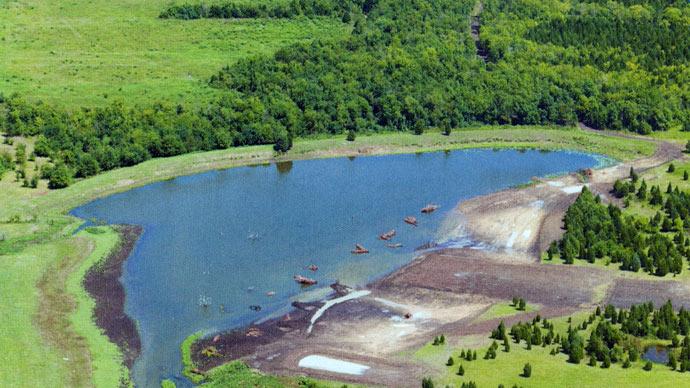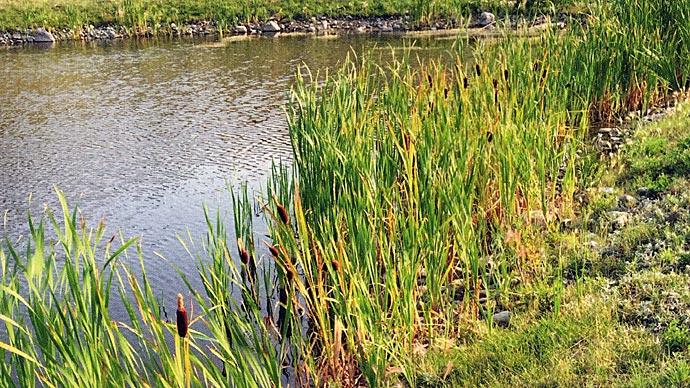
Way back in the day, when I started this career in fisheries management, things were much simpler. It was way harder to make a living, but it was simpler.
If you wanted a pond, you'd show up to the country diner where the old-timers gathered for coffee early every morning, look for the grizzled guy in bib overalls, khaki shirt and tobacco stains on both sides of his mouth. That was the bulldozer guy. And, you better get to the cafe by 5:00 in the morning, or you'd miss him. He'd be on site, wherever that was, an hour before daylight, to service his machines, add fuel, grease all the zerks, and have engines warmed up before the sun rose.
He'd jot down your name and number in his little spiral notebook, tuck it neatly into a top pocket of those overalls and he'd head off to knock over some trees and push some dirt around. In a few weeks, a big truck with a flat bed would show up, park on the shoulder, and he'd unload that big yellow dozer with the silver blade. He'd go to work, back and forth, shoving, pitching, rearranging, and sculpting your dirt until you had a big hole in the ground, shaped something similar to a cereal bowl. Before long, it would rain and you'd have a pond. Some folks would stock some fish—many states offered fish as a service way back then—or you'd have a place for livestock to drink. As an afterthought, you might buy some of that Purina Catfish Chow from an endcap at the feed store, and pitch some in to see if your fish would eat it.
Well, I'm here to tell you things aren't quite like that today.
People build ponds for specific reasons. Seems in today's world, when our phone rings, each earnest landowner is in search of something slightly different than the last person.
My wife is a perfect example of such a land-owner.
When we bought these twelve acres fifteen years ago, there was one leaky, ugly, smelly pond on it. The levee that didn't hold water very well was built as a road across a deep canyon-like gully, so the prior owner (ironically an earthmover by trade) could drive across to get to the other side of the property. Just below that little muddy puddle was a deep, steep-sided, eroded wall, almost a canyon itself.

We decided to build a pond right there, next to the house. Queen Debbie and I had a conversation. She definitely wanted a pond there. My vision was quite different than hers. After we figured out there wasn't enough clay within the site to build a big enough dam, we searched around the property and found two spots that had enough clay to build the dam for a nice, half-acre pond.
As Mike Otto began building it, I came to Debbie to talk about it. There were several large post oak trees that would be flooded, and I had eyes for three of them to be pushed over for fish structure. I just wanted to inform her where they'd be placed.
I'll never forget that conversation.
She said, "Honey, this is going to be a swimming pond."
I said, "Babe, I'm a fish guy, so we're going to put this tree over there, and that tree next to it and the last one perpendicular, out in deeper water."
With a look reserved only for husbands, she said, "Maybe you didn't understand what I just said."
We have a swimming pond, next to the house, complete with a zip line, swimming dock with a ladder, a retaining wall in four feet of water, with steps for swimmers to climb out. The lower two-thirds of that pond is smooth, with a four-foot deep ridge near the house, then sloped downward to its depth of slightly more than 20 feet. In the far upper end, we placed some root-balls, a few small trees and a small brush pile.
I'm not sure how those fish got in there.
On this property, we have the swimming pond, a catfish pond for meat and for kids to catch their first fish, and two hatchery ponds where we raise bluegills for others to stock. We also have an experimental pond where we play with different types of fish, and another pond where we've tested fish foods for Purina over the years. Oh, and the swimming pond doubles as a water source to irrigate the yard and garden.
The catfish pond was built for its clay to build the dam for the swimming pond. It's basically rectangular and a consistent 8 feet deep. The bottom is straight and steady, so we can seine it to catch big numbers of fish. But, by far, its purpose is to grow fish for people to catch, usually kids who are catching their first fish. By design, this pond makes it easy to grow fish, and easy to catch them.
We have two ponds measuring a tenth-acre each. Those slope from three feet to six feet deep at the deepest end, and each is 50 feet wide and 80 feet long. Each of those has a drain pipe, and a fill pipe from the well. Their purpose is to grow small bluegills or other species as a crop, so we can harvest and easily move the fish, drain the pond, and start over.
Today, when our phone rings, one of the first questions we'll ask is, "Why do you have your pond?" Or, "Why do you want to build a pond?"
Most people admittedly want a fishing pond, but growing numbers of folks just want to have a beautiful pond that's aesthetically appealing. The allure of water is magical to folks. Others want ponds for a more practical reason. They want to have a place where the farm drains. Or, they want a lagoon to capture agricultural waste.
Some want to irrigate. Others want storm water retention. Most want a pond for recreation, to enhance their experiences out in the country, to escape the bright lights of the city.
Purposes vary as widely as the six-lane highways the city-dwellers wish to escape.
Today, people forego the early morning wake-up call at the rural cafe. They go straight to the University of Google, or call someone who knows someone, and find the best contractor suited to build exactly what they want—if they know exactly what they want.
As hard as it was to make a living during those simple times back in the day, I don't miss it. In today's world, different choices make for better challenges. But we also have better tools and a variety of options. We can make a pond act like a river, using circulators and aeration systems. We can mold the earth in many ways to build the pond of your dreams.
Picking a purpose is where it starts.
And, you have lots of different reasons to have that pond.
What's yours?
Reprinted with permission from Pond Boss Magazine



